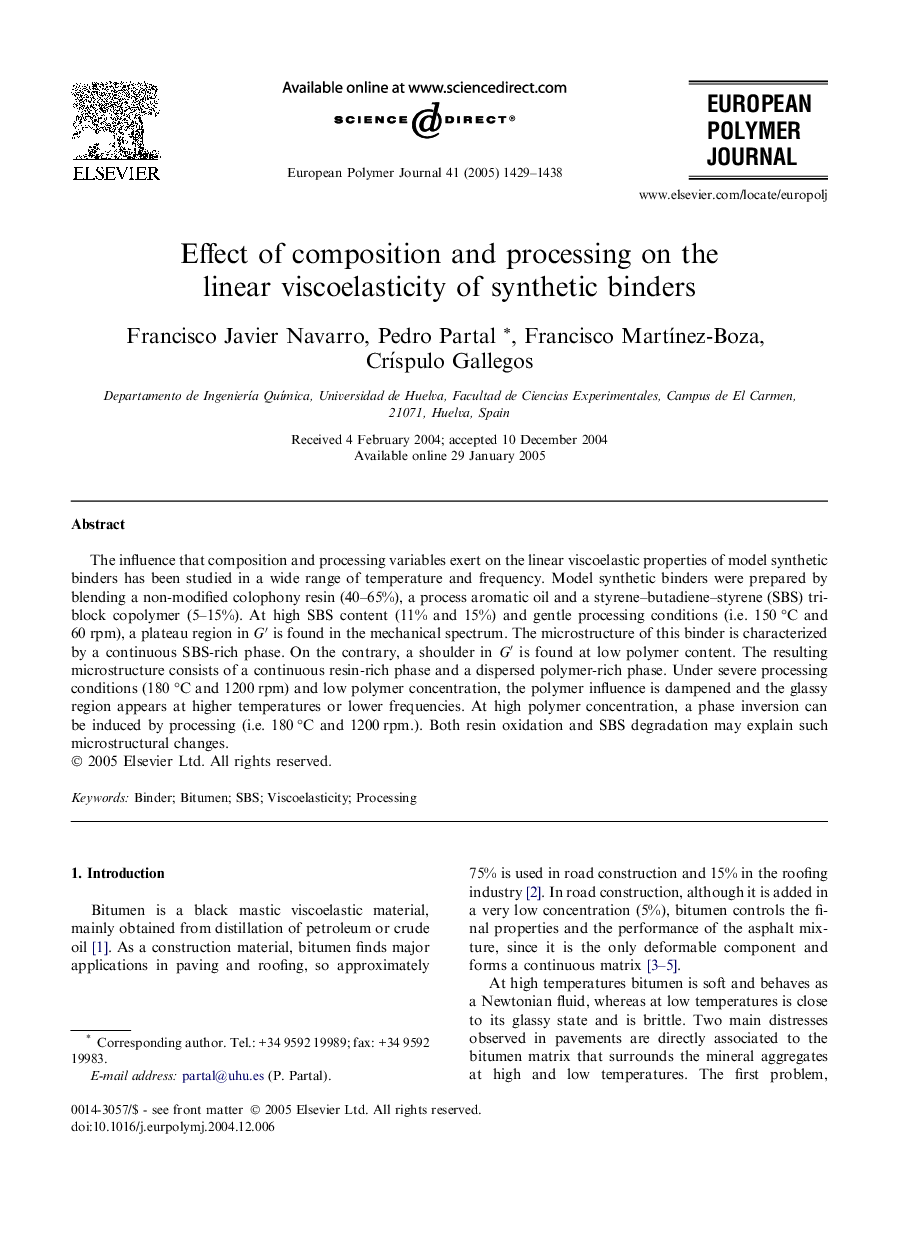| Article ID | Journal | Published Year | Pages | File Type |
|---|---|---|---|---|
| 10609305 | European Polymer Journal | 2005 | 10 Pages |
Abstract
The influence that composition and processing variables exert on the linear viscoelastic properties of model synthetic binders has been studied in a wide range of temperature and frequency. Model synthetic binders were prepared by blending a non-modified colophony resin (40-65%), a process aromatic oil and a styrene-butadiene-styrene (SBS) triblock copolymer (5-15%). At high SBS content (11% and 15%) and gentle processing conditions (i.e. 150 °C and 60 rpm), a plateau region in GⲠis found in the mechanical spectrum. The microstructure of this binder is characterized by a continuous SBS-rich phase. On the contrary, a shoulder in GⲠis found at low polymer content. The resulting microstructure consists of a continuous resin-rich phase and a dispersed polymer-rich phase. Under severe processing conditions (180 °C and 1200 rpm) and low polymer concentration, the polymer influence is dampened and the glassy region appears at higher temperatures or lower frequencies. At high polymer concentration, a phase inversion can be induced by processing (i.e. 180 °C and 1200 rpm.). Both resin oxidation and SBS degradation may explain such microstructural changes.
Related Topics
Physical Sciences and Engineering
Chemistry
Organic Chemistry
Authors
Francisco Javier Navarro, Pedro Partal, Francisco MartÃnez-Boza, CrÃspulo Gallegos,
